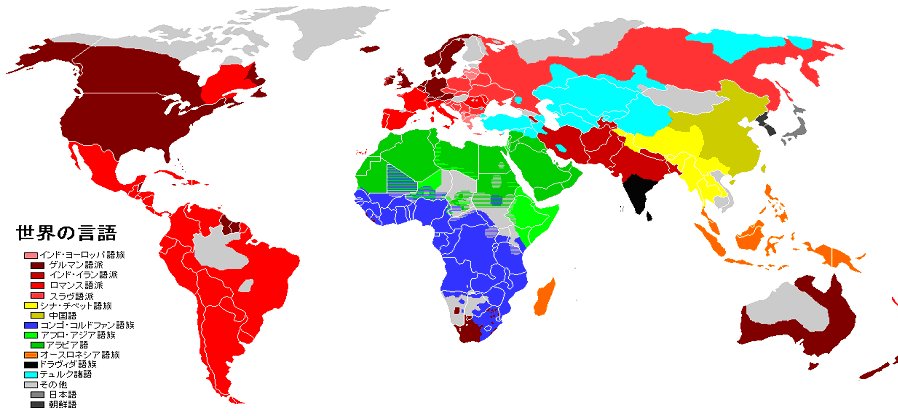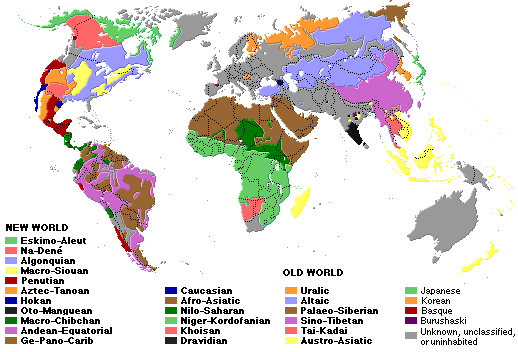/Image1810.gif)
Figure 4. The MLN of Indo-European languages.
(a) An MLN for 84 contemporary languages reconstructed
under the BOR1 model. Vertical edges are indicated in grey, with
both the width and the shading of the edge shown proportional
to the number of inferred vertically inherited COGs along the
edge (see the scale).
The lateral network is indicated by edges that do not map onto
the vertical component, with the number of cognates per edge
indicated in colour (see the scale). Lateral edges that link ancestral nodes represent
laterally shared COGs among the escendent languages of the connected
nodes, whose distribution pattern could not be explained by origin
and LO under the ancestral vocabulary size constraint. The two
heaviest edges of Slovene (Slavic) and Romanian (Romance) are marked by an arrow. (b) Distribution of
connectivity, the number of oneedge-distanced neighbours for
each vertex, in the network. (c) Frequency distribution
of edge weight in the lateral component of the network.
Nelson-Sathi et al.(2012)による『Networks
uncover hidden lexical borrowing in Indo-European language evolution』から
BOR = borrowing (models), COG = a single cognate set, LO =
loss-only (model), MLN = minimal lateral network.
Abstract
Language evolution is traditionally described
in terms of family trees with ancestral languages splitting into
descendent languages. However, it has long been recognized that
language evolution also entails horizontal components, most commonly
through lexical borrowing. For example, the English language
was heavily influenced by Old Norse and Old French; eight per
cent of its basic vocabulary is borrowed. Borrowing is a distinctly
non-tree-like proces - akin to horizontal gene transfer in genome
evolution - that cannot be recovered by phylogenetic trees. Here,
we infer the frequency of hidden borrowing among 2346 cognates
(etymologically related words) of basic vocabulary distributed
across 84 Indo-European languages. The dataset includes 124 (5%)
known borrowings. Applying the uniformitarian principle to inventory
dynamics in past and present basic vocabularies, we find that
1373 (61%) of the cognates have been affected by borrowing during
their history. Our approach correctly identified 117 (94%) known
borrowings. Reconstructed phylogenetic networks that capture
both vertical and horizontal components of evolutionary history
reveal that, on average, eight per cent of the words of basic
vocabulary in each Indo-European language were involved in borrowing
during evolution. Basic vocabulary is often assumed to be relatively
resistant to borrowing. Our results indicate that the impact
of borrowing is far more widespread than previously thought. |



/Image1810.gif)
/Image1833.gif)
/Image1808.gif)